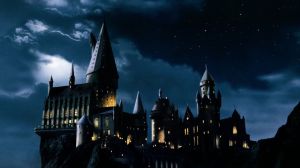After an extended wait, Star Trek fans were finally given their first look at Star Trek: Discovery, the first new Star Trek television series in over a decade, when the series’ trailer was released.
Videos by ComicBook.com
The trailer introduced the show’s main character, Commander Michael Burnham, and several other supporting cast members. It also revealed the return of the Klingons, who are seemingly in direct conflict with the Federation once again.
However, these Klingons appear different both physically and in their demeanor. Their foreheads are bulbous but lack the ridges that so defined their appearance traditionally. They appear in the trailer much more stoic and religious than they have traditionally been portrayed in the past.
This is actually just the latest chapter in the of changes to the appearance of Klingons. Could the secret to their new appearance be buried in that legacy?
This is not the first time that the Klingons have gotten a makeover. The Klingons in Star Trek: The Motion Picture and Star Trek III: The Search for Spock were made even more intimidating looking. When Star Trek: The Next Generation debuted in 1987, it introduced the most popular of all Klingons in Star Trek history, Worf.
Worf was a surprising character for two reasons. First, he was a Klingon officer of Starfleet, suggesting that relationships between the Federation and the Klingon Empire had changed considerably in the years between the end of Star Trek: The Original Series and the beginning of Star Trek: The Next Generation.
The other reason Worf was so surprising is that he looked quite different than the Klingons from Star Trek: The Original Series. Worf’s facial features were much less humanoid, with strong ridges protruding from his forehead.
Star Trek: The Next Generation made no excuses for why Worf and the other Klingons on the show looked so different. In fact, Star Trek: The Next Generation never so much as acknowledged that the Klingons looked any different than the Klingons on Star Trek: The Original Series.
Star Trek: The Next Generation
The truth of the matter was simply that decades had passed in the real world between the two series. Special effects and television makeup had advanced considerably and Gene Roddenberry and the Star Trek: The Next Generation decided to use the opportunity to make the Klingons look more like Roddenberry had imagined them in the first place but couldn’t afford to make into a reality on The Original Series.
The in-universe silence persisted even as Star Trek: Deep Space Nine debuted. Worf later joined Deep Space Nine after The Next Generation went off the air. The silence persisted until the milestone episode “Trials and Tribble-ations,” which saw members of the Star Trek: Deep Space Nine crew time travel back into the events of the classic Star Trek: The Original Series episode “The Trouble with Tribbles.”
In the episode, the Deep Space Nine crew, including Worf, have a seat in the mess hall of Space Station K-7. Some Klingons are also visiting the station and the Deep Space Nine crew is shocked by their appearance. They turn Worf for an explanation.
“They are Klingons… and it is a long story,” Worf offered. “We do not discuss it with outsiders.”

Star Trek: Enterprise
That was the first time that Star Trek cannon acknowledged the change. Though it wasn’t a full explanation, it did suggest that some event transpired to cause the Klingon change, and it was something that Klingons remembered well while others had forgotten or never known.
The nature of the event wasn’t revealed until Star Trek: Enterprise, a prequel series to Star Trek: The Original Series. In Enterprise, it was revealed that the Klingons were always meant to look the way they did in Star Trek: The Next Generation and beyond. The change in their appearance, as well as their behavior, was the result of Klingon scientists attempting to augment their own physiques with enhanced human DNA left over from a Eugenics war on Earth.
The results were disastrous. Not only did the experiment give the Klingons human-like traits, it interacted with a flu virus and became a fatal, full-scale epidemic. A cure was eventually found, but because the augments affected the Klingons on a genetic level the human traits were passed down to their children. It was descendants of this group that Captain Kirk and his crew interacted with in Star Trek: The Original Series.

Star Trek: Discovery
So how does this history explain why the Star Trek: Discovery Klingons look so different? The true explanation is likely that the producers and creators of Star Trek: Discovery simply wanted to update the alien species to match the look of the new show, which looks unlike any Star Trek show before it.
Fans have come up with the idea that these Klingons may be descendants of those infected with the Augment virus. This would explain why their foreheads are smooth, but not why they are also bulging and hairless. Also, Discovery takes place between Enterprise and The Original Series, making this theory fit a bit uneasily.
Another theory is that these are ancient Klingons. The scenes shown in the trailer suggest that they have religious devotion not seen in Klingons before. Perhaps these are the forebears of the modern Klingons who have all but died out, or maybe they’re from a group so isolated from the rest of their kind that they have evolved along a different path
Then again, perhaps nothing is quite as it seems. To be sure, Star Trek fans will be eagerly awaiting the premiere of Star Trek: Discovery to find out more.

More Star Trek
More Star Trek News: Star Trek Roller Coaster Opens In Germany / Star Trek Actor Running For Congress As Mark Twain / Wrath Of Khan Director Hints At New Star Trek Project / Star Trek: Discovery Producer On Series’ LGBTQ Representation








